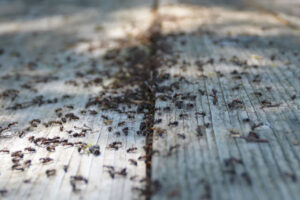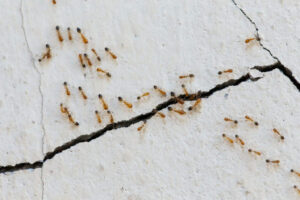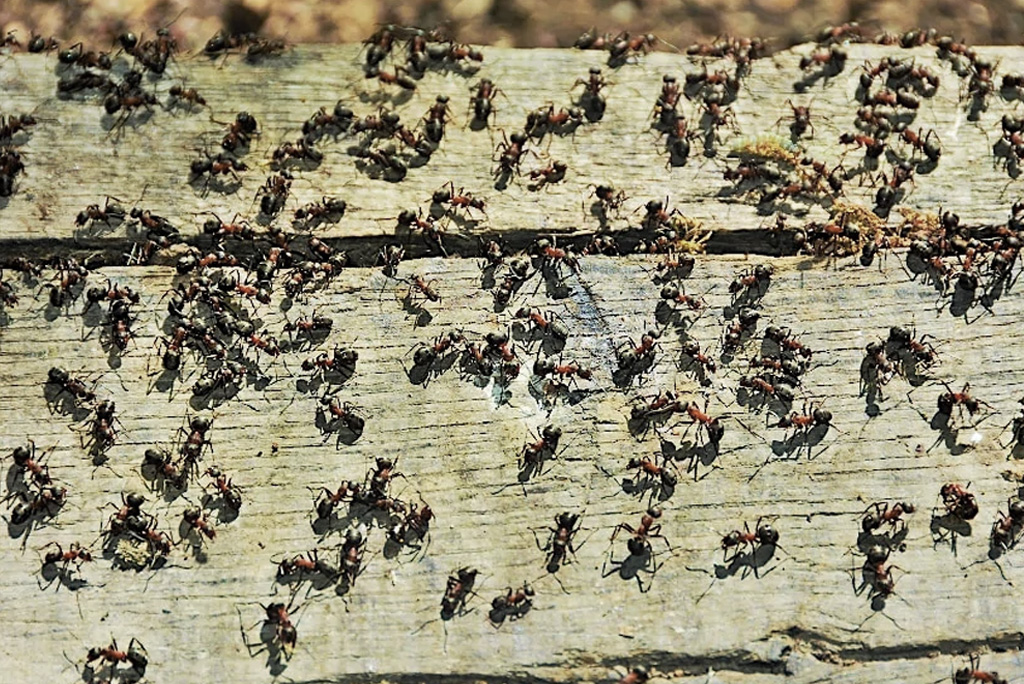Ants, those industrious little insects, can sometimes become unwelcome guests in our homes. With over 12,000 known species of ants globally, it’s no surprise that occasionally you may find yourself grappling with an ant infestation.
In this article, we will talk about these common household pests. So, do you know the most common ant species that can potentially infest your home? If not, keep reading because today, we’re going to offer valuable insights on how to identify and deal with an ant infestation.
Common Ant Species In Homes
Ants are as diverse in their appearance and habits as the places they can inhabit. Understanding the specific ant species invading your home is crucial for effective pest control and treatment. Let’s explore the most prevalent ant species that you may encounter:
Odorous House Ants (Tapinoma sessile)
These tiny, dark brown to black ants are known for the unpleasant odor they emit when crushed, often described as “rotten coconut.”
Odorous house ants are typically drawn to sweets and greasy substances. That’s why your kitchen and pantry are their prime hunting grounds. These ants form well-organized trails as they forage for food – that’s a telltale sign of their presence.
Carpenter Ants (Camponotus spp.)
Carpenter ants are relatively large ants, usually black but sometimes reddish. Their body is divided into segments, and they possess a sleek, robust appearance.
Unlike termites, which consume wood, carpenter ants create galleries within wood, causing structural damage to houses. They often nest in damp, decaying wood, making crawlspaces and attics favorite hiding spots.
Pavement Ants (Tetramorium caespitum)
Pavement ants are small, dark brown to black ants with two small spines on their backs.
As their name suggests, pavement ants build nests in concrete cracks in sidewalks, driveways, and patios. They frequently enter homes in search of food, following established scent trails.
Argentine Ants (Linepithema humile)
Argentine ants are light to dark brown and have a slender body with a single distinct segment.
They are highly social insects, forming massive colonies that can stretch for miles. They can be a persistent problem indoors and may invade homes in long, determined lines.
Pharaoh Ants (Monomorium pharaonis)
Pharaoh ants are among the tiniest ant species, often pale yellow or light brown in color.
They can be challenging to control due to their complex behavior and rapid reproduction rates. They establish nests in warm, humid areas and are known to infest hospitals and other sensitive environments.
Red Imported Fire Ants (Solenopsis invicta)
Red imported fire ants are reddish-brown ants with a stinger. They have a distinctive, aggressive swarming behavior and are known for their painful stings.
They build mound-shaped nests in lawns and gardens but can enter homes foraging for food.
Acrobat Ants (Crematogaster spp.)
Acrobat ants get their name from their habit of raising their abdomen over their thorax and head when disturbed. They vary in color from light brown to dark brown, and they have a heart-shaped abdomen.
They often nest in rotting wood and may venture indoors in search of food or shelter.

Identifying Ant Infestations
Learn to recognize these common ant species as this is the first step in tackling ant infestations effectively. Each species has its unique characteristics, preferences, and behaviors, which can impact the strategies you use to combat their presence in your home.
It’s also important to identify an ant infestation in its early stages to prevent it from becoming a larger problem. Look out for these signs:
Trails of ants – If you consistently spot a steady procession of ants traveling back and forth, it’s a clear indication of them foraging for food.
Nests – Search for ant nests in and around your home, they’re often located in cracks, crevices, and damp areas.
Frass – Carpenter ants, in particular, leave behind a sawdust-like debris called “frass” near their nesting sites.
Damaged wood – Keep an eye out for wooden structures in your house that appear damaged, it could be a sign of a carpenter ant infestation.
By recognizing these signs, you can take prompt action to address the infestation and prevent further complications.

Dealing With An Ant Infestation
If you suspect or confirm an ant infestation in your home, don’t delay and start treating it right away. Here are some steps to help you deal with the ant problem:
Identify the ant species
Determine the species you’re dealing with to choose the most effective control methods.
Non-toxic approach
First, consider using non-toxic, natural remedies like diatomaceous earth or vinegar to deter ants.
Professional pest control
If the DIY methods fail and the infestation persists, consult a professional pest control expert. He can inspect and assess the situation, and provide targeted treatment options to effectively eliminate the ant infestation.
Follow-up and maintenance
Even after successfully eliminating the problem, continue practicing prevention measures to avoid another ant infestation in the future. Take a proactive approach by maintaining a clean, well-sealed home, and seeking professional help when needed.
Don’t hesitate to contact our highly trained and knowledgeable team of pest control experts in Metro Atlanta, GA. Peachtree Pest Control provides the most reliable ant removal services near you. We can help you reclaim your home from these uninvited guests and enjoy peace of mind for you and your family.
